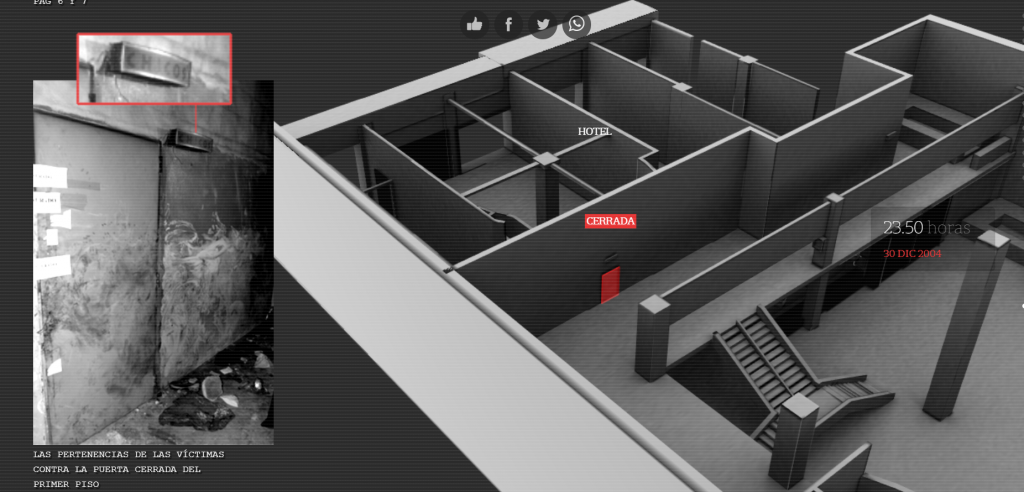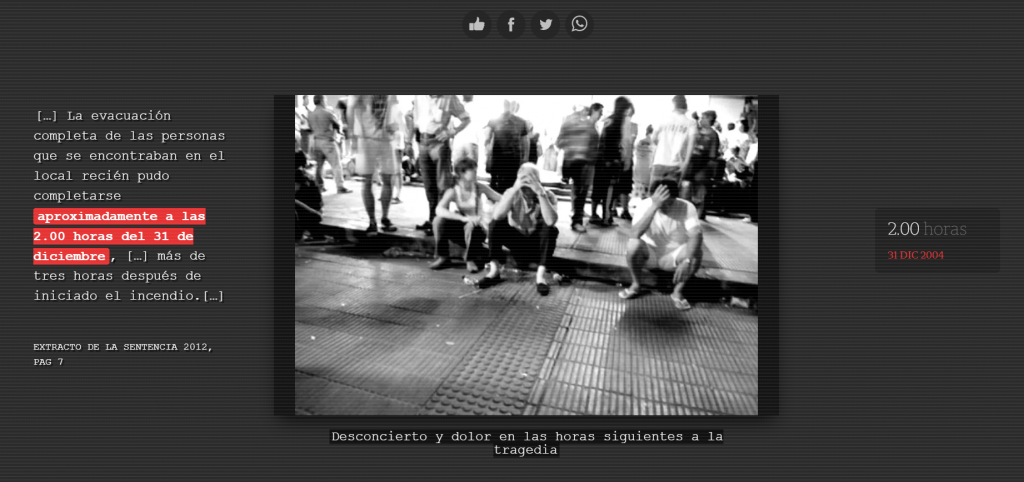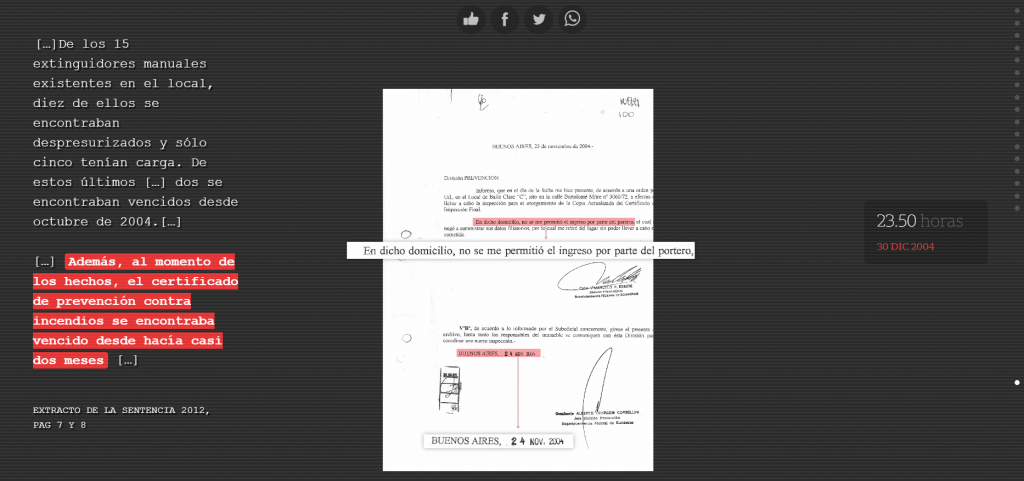Context
In 2004, Argentina suffered the worst world tragedy in the history of music and the greatest catastrophe due to unnatural causes: the night club República de Cromañón was burnt down in the middle of a concert of the musical group Callejeros; the fire caused the death of 194 persons and other 1.400 persons were injured. The place was a mortal trap because the owner had locked the exits and it caused a more dramatic ending. Fifteen years after that episode, which was a turning point as regards the policies of authorization and control of the night clubs and caused the dismissal of the mayor of the City of Buenos Aires, LA NACION recreated this tragedy using new technologies.

Description
On the 15th anniversary of the tragedy of Cromañón, LA NACION proposed an innovative development which allows to shed some light on what happened that night based on testimonies given during the thorough investigation conducted by Justice, which revealed the irregularities of the night club. The complexity of the case and the length of the investigation left several questions in the collective memory. We decided then to give answers about what really happened in the night club according to Justice through the most relevant fragments of the file, which was exhaustively analyzed for this project by a group of journalists. In order to show the conclusions, we reconstructed what happened in an unprecedented way: through the plans we obtained of the place, which remains closed and inaccessible since the tragedy. The narrative was based exclusively on the clarifying parts of the testimonies of the case which were shown in the animated graphics of the spaces where the catastrophe took place. It was possible to recreate the events in the most detailed and faithful way until now.

Strategy and impact
The strategy was not to consider as simple reminder the 15th anniversary of the tragedy that was a turning point in Argentina. The audience is asking for more than just an emotional anniversary and the media must rise to the occasion and offer added value on key dates. What could we add about an event that happened in 2004?
We found that there were several not clarified facts about what really happened that night and that we had the appropriate technologies to show it in an experience-based way. It was necessary to enter the place for this objective, but Justice did not authorize access. We overcame that problem by obtaining the plans of the facilities, which allowed us to recreate what happened in a detailed and precise manner with the unobjectionable information of the case. We consider that we have correctly understood the demand from society who was very interested in the production, the prominent story of the day on the website of LA NACION. The scrolly format was effective, with more than 6 minutes average of reading, above the general average.
Technology used
Interactive frontend development was made in JavaScript and it was used three.js as framework for 3D model.
Three.js is a JavaScript library that allows to create or manage 3D objects in web environment. Despite being a JavaScript library, the graphic calculation is made with the GPU. This means that performance of the interactive shall depend on the video card of the user that, now are very good. This makes it easier the transitions between the different views of the 3D model.
3D modelling was made in Blender. To optimize interactive performance, reduce weight and downloading time, 3D model is made in simple forms with few polygons.
In order to have a realistic appearance without affecting performance, the scene shadows are precalculated in an image that ‘surrounds’ the 3D model. Thus, the user does not perform calculation of the shadows. This is a technique named ‘baking’, like the technique used in videogames.
Estimated number of persons working on the project
A team of nine persons worked on this project, which includes journalists, designers and programmers.


